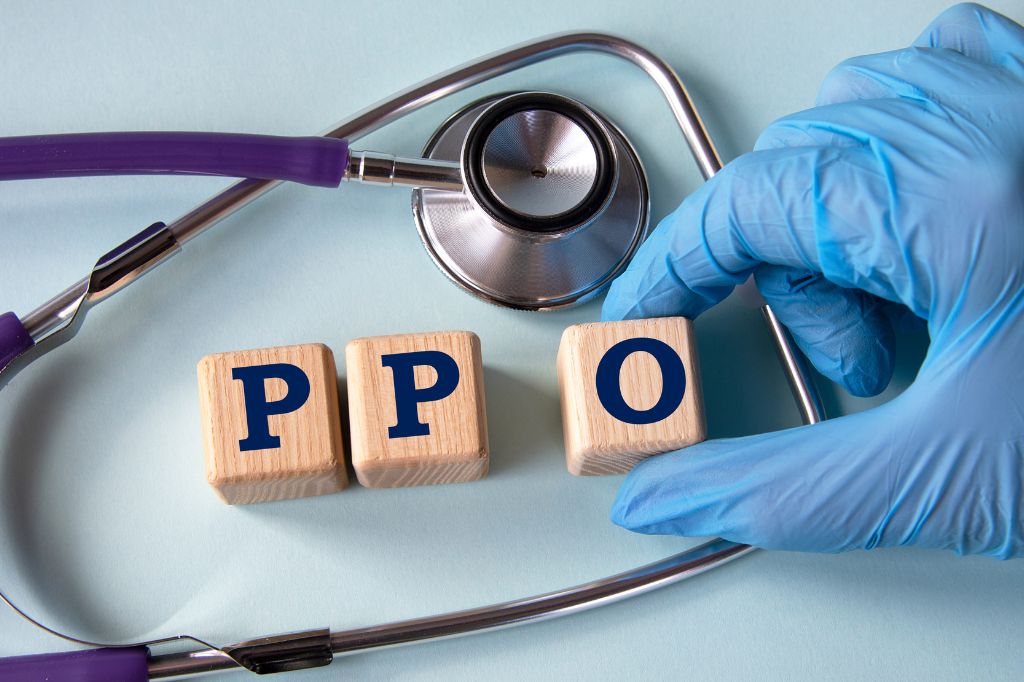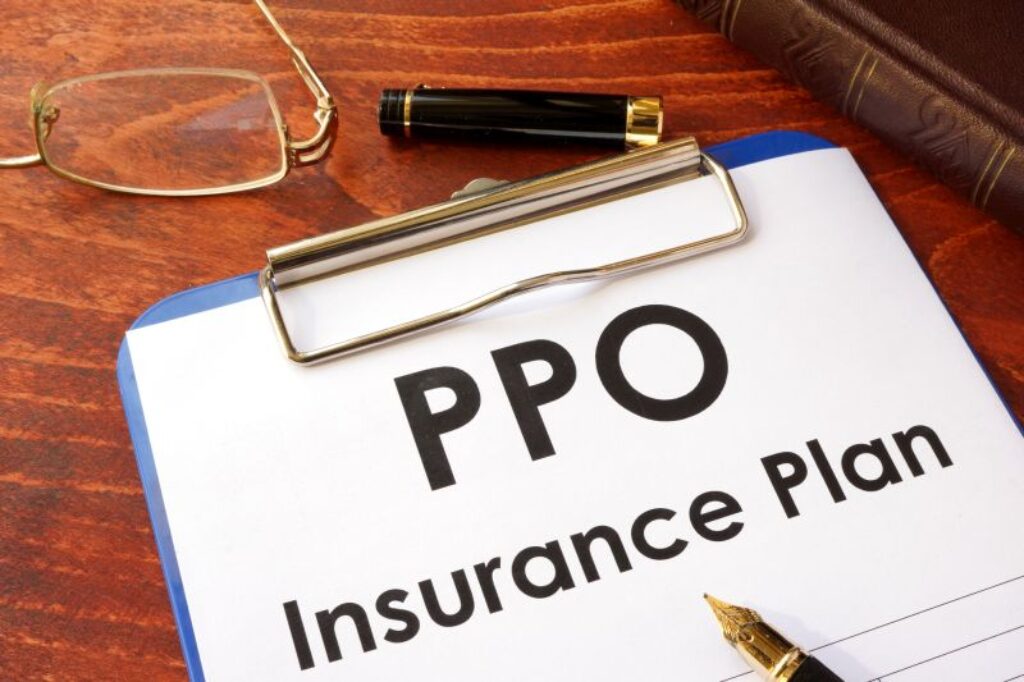
Table of Contents
The Basics of Accident PPO Plans: What You Need to Know
Accident PPO (Preferred Provider Organization) plans are a specific type of health insurance designed to cover medical costs associated with accidents. These plans allow insured individuals to seek care from a network of designated providers—hospitals, physicians, therapists, and other healthcare professionals who have agreed to provide services at lower rates. For many, understanding the breadth and depth of these plans is essential to navigating the complexities of healthcare and ensuring they are adequately protected from the financial burdens that can arise from unexpected incidents.
One of the defining features of an Accident PPO Plan is its flexibility. Whether you have a minor injury or a major accident requiring extensive medical intervention, these plans are structured to offer both immediate care and ongoing treatment options. The policies typically include coverage for emergency medical services, diagnostic tests, rehabilitation therapies, and even follow-up care, ensuring a comprehensive approach to patient health. Unlike traditional health insurance plans that may impose strict limitations on provider access, Accident PPO plans allow for a more adaptable range of choices, giving members the ability to seek specialized care without requiring a referral.
How Do Accident PPO Plans Differ from Traditional Insurance?

Source:youtube.com
While both Accident PPO plans and traditional health insurance aim to provide coverage for medical needs, they diverge significantly in structure and application. Traditional insurance plans generally encompass a broader range of health services, encompassing everything from routine check-ups to preventative care, focusing on long-term health maintenance. Conversely, Accident PPO plans put a primary emphasis on immediate care linked explicitly to accidents.
Additionally, traditional insurance often mandates primary care physician (PCP) referrals to access specialized services, creating a potential delay when treatment is needed urgently. In stark contrast, Accident PPO plans allow members the freedom to connect directly with any provider within their network without a referral. This approach caters to the unpredictability that accidents present, enabling quicker access to necessary care and treatments, vastly improving the patient experience at critical times.
Key Elements of Coverage You Should Be Aware Of
Understanding the key elements of coverage within Accident PPO plans is paramount. Coverage typically includes emergency medical services, hospitalization, surgical interventions, and post-accident rehabilitation therapies, ensuring that users are not only treated but also facilitated in their recovery process. Moreover, accident-specific plans often provide ancillary services such as X-rays, MRIs, and urgent care visits that directly correlate with the aftermath of an accident.
It’s crucial to pay attention to the specific exclusions commonly outlined in these plans. For instance, some may not cover accidents that occur while under the influence of drugs or alcohol or those resulting from engaging in risky or illegal activities. Furthermore, members should be cognizant of the limits on particular treatments and the policies surrounding pre-existing conditions. By thoroughly understanding these elements, insured individuals can better navigate their coverage and avoid unpleasant surprises when medical care becomes necessary.
Navigating the Benefits: What Makes Accident PPO Plans Stand Out?
Comprehensive Coverage: What’s Included and What’s Not
One of the standout features of Accident PPO plans is their ability to provide comprehensive coverage tailored to accident-related medical expenses. This means that not only are urgent care services included, but those involved in accidents may also receive extended services such as mental health counseling, long-term rehabilitation, and specialized treatments that focus on recovery from physical trauma. Within this broad umbrella, members of an Accident PPO plan can access a network of providers who offer vast experience and expertise in handling post-accident care.
However, it is crucial to understand clearly what is excluded from coverage, as policies can vary significantly from one provider to another. Typically, routine follow-up visits unrelated to the original accident, cosmetic procedures, and treatment for injuries unrelated to the accident might be outside the scope. Therefore, potential members should meticulously scrutinize the plan documents to have a clear picture of both inclusions and exclusions, helping them to make informed decisions about their healthcare needs.
The Financial Advantage: Reducing Out-of-Pocket Expenses
Accident PPO plans also shine when it comes to considering the financial implications of medical care following an accident. With the unpredictability of accidents, expenses can quickly accumulate, leading to financial stress for affected individuals and families. These plans are structured to minimize out-of-pocket costs through managed care networks. By utilizing in-network providers, members can benefit from lower copays and reduced deductibles, significantly alleviating the burden of medical expenses that arise suddenly due to accidents.
Moreover, many Accident PPO plans also provide access to preventive care services at no additional cost, helping members to maintain their health and potentially avoid future accidents. The resulting financial advantage transitions past mere cost savings; it integrates a layer of security and peace of mind, knowing that members are protected in times of need without the incessant worrying about escalating bills that often accompany unexpected health issues.
Access to Quality Care: The Importance of Network Providers
Accident PPO plans prioritize access to a network of quality healthcare providers, a fundamental aspect that enhances the overall experience for members. When a member of an Accident PPO plan seeks care, they can rest assured that the providers within their network have met rigorous standards of quality and effectiveness. This focus on quality care is vital because, in the aftermath of an accident, timely treatment is of utmost importance in preventing long-term complications.
Highly rated hospitals, specialists, and facilities with solid reputations for handling post-accident care are usually part of these networks, which aids members in achieving the best outcomes. Furthermore, many Accident PPO plans feature user-friendly online directories, allowing members to identify nearby providers, read reviews, and access profiles to make educated choices regarding their care. Such accessibility and transparency represent a significant evolution in the way individuals engage with their health insurance, fostering positive health outcomes and creating a robust support system for recovery.
Understanding the Claims Process: Simplifying Your Experience

Source: youtube.com
Step-by-Step Guide to Filing a Claim
Navigating the claims process can be daunting, especially during the stressful aftermath of an accident. However, understanding the procedure can mitigate anxiety and promote a smoother experience. Generally, the first step in filing a claim under an Accident PPO plan is to ensure that medical treatment is sought promptly, as many policies require this for coverage to apply. Following the treatment, members typically need to collect necessary documentation, including medical records, invoices from providers, and any police reports related to the accident.
The next step usually involves completing a claims form provided by the insurance company. This form requires detailed information regarding the accident and the services rendered. Once completed, the form and documents must be submitted to the claims department of the insurance provider. Many companies now offer online submission options; however, members may also opt to submit via traditional mail. After submission, the claims department will review the documentation, often resulting in either approval or denial of the claim based on adherence to the plan’s policies. Regular communication with the claims department can also expedite the process, ensuring all necessary information is available for review.
Common Pitfalls: What to Avoid When Submitting Claims
Despite the structured nature of the claims process, common pitfalls can complicate the experience for members. One prevalent issue arises from inadequate documentation; failing to submit complete or clear medical records can delay claims or result in denials. Members should ensure that they understand what documentation their plan requires and maintain organized records throughout the healthcare process.
Another significant pitfall is missing deadlines related to claims submission. Most PPO plans establish specific time frames within which claims must be filed following an accident, and missing these deadlines can unintentionally void coverage. It’s vital for members to be aware of these timelines and act promptly. Additionally, assuming that verbal communications with insurance representatives suffice can lead to misunderstandings; all claims-related conversations should ideally be documented via email or written correspondence for future reference.
Maximizing Your Benefits: Tips for a Smooth Process
To maximize benefits and ensure a smooth claims process, proactive measures can be advantageous. First and foremost, understanding the nuances of your Accident PPO plan is crucial—keeping a copy of the policy easily accessible can help members quickly reference coverage details when needed. Engaging with the insurance provider through regular inquiries about procedures can also yield favorable outcomes, as staying informed can help navigate the claims process effectively.
It’s also advantageous to develop a relationship with in-network providers. Establishing rapport can promote positive communication that may streamline the exchange of documentation necessary for claims. Additionally, utilizing the insurer’s online tools to track the status of claims and stay updated on any required actions can elucidate the process, allowing for timely intervention if complications arise. Ultimately, taking an active role in managing one’s health insurance plan is foundational for maximizing benefits and minimizing stress during what can already be a challenging time.
Real-Life Scenarios: Making Sense of Accident PPO Plans
Case Studies: How Accident PPO Plans Work in Practice
To illustrate the practical applications of Accident PPO plans, consider the case of Jane, a 35-year-old graphic designer who faced an unexpected car accident resulting in multiple fractures and a concussion. Following her accident, Jane utilized her Accident PPO plan, receiving immediate emergency care at a leading in-network hospital renowned for its trauma treatment. Her plan covered the significant costs related to her emergency room visit, imaging scans, and hospitalization.
Throughout her recovery, Jane leveraged the plan’s access to rehabilitation services, enabling her to attend physical therapy sessions without the need for referrals. This flexibility played a crucial role in her recovery timeline, allowing Jane to return to work quicker than anticipated. Her positive journey demonstrates the profound impact that Accident PPO plans can provide in facilitating access to quality care and minimizing financial burdens during critical moments.
Member Testimonials: Real Experiences and Insights
Hearing directly from members can provide valuable insights into the effectiveness and efficiency of Accident PPO plans. For instance, Matthew, a new member, shared his experience following a workplace accident that left him with a fractured wrist. Matthew expressed appreciation for how quickly he was able to receive treatment, attributing it to the design of the accident-specific PPO plan that allowed him immediate access to specialists who understood the nuances of workplace-related injuries. His testimonial highlights the importance of having tailored coverage that responds promptly to accidents.
Another member, Lisa, emphasized the emotional reassurance that comes with having Accident PPO coverage. After experiencing a slip and fall accident that led to extensive medical needs, Lisa appreciated not just the financial coverage but also the support from her network providers who were aware of her plan and acted in coordination with her needs. Such experiences illustrate the positive outcomes that can stem from having the right Accident PPO plan in place, providing peace of mind alongside financial security.
Future Considerations: The Evolution of PPO Plans in a Changing Landscape

Source: rightpatient.com
As healthcare continues to evolve, the landscape of Accident PPO plans is likely to undergo significant transformations. The increasing integration of technology into healthcare management—such as telemedicine and mobile claims processing—holds promise for a more streamlined and efficient experience for members. The future may yield enhancements to claims processing, leading to quicker resolutions and better accessibility for individuals seeking treatment post-accident.
Moreover, an ongoing shift towards value-based care emphasizes not just the quantity of services rendered but the overall quality and outcomes associated with treatment. This evolution aligns seamlessly with the goals of Accident PPO plans, providing mechanisms for members to access high-quality care that prioritizes recovery and wellbeing. Those exploring Accident PPO plans should stay informed about emerging trends in healthcare to select coverage that not only meets current needs but also prepares them for a future of healthcare that continues to advance.







